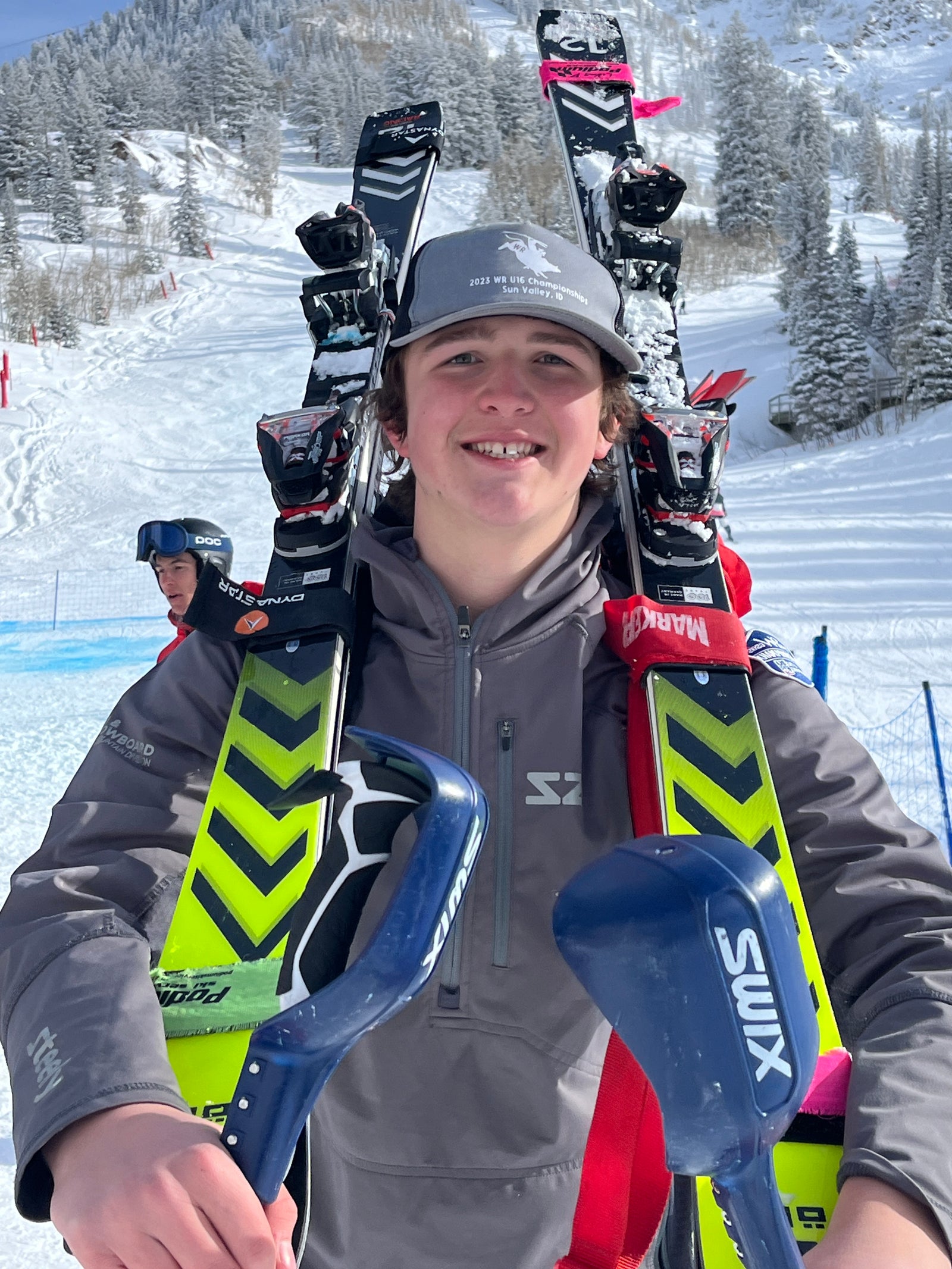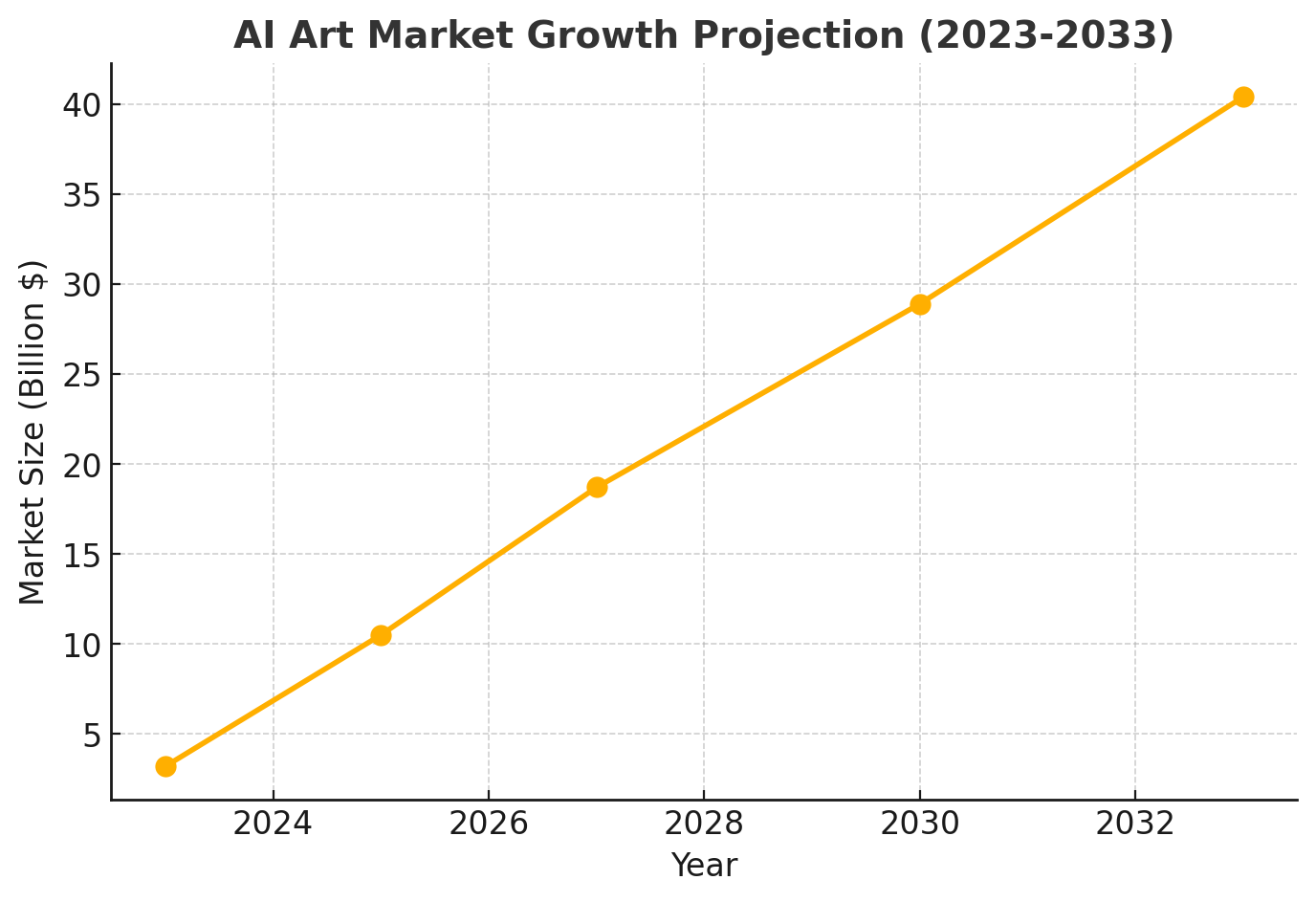Rebelling Against the Ordinary with Curated, Gallery-Quality AI Art
I’m Erik Postnieks, the visionary AI artist and curator behind Abstract Rebellion. Here, AI meets human expertise to create one-of-a-kind, museum-quality masterpieces that push the boundaries of technology and creativity.
We’re not just another AI art platform. We stand apart through rigorous curation, advanced AI artistry, and an unwavering commitment to quality.
Our hybrid AI-human curation process ensures that only the most compelling, high-quality works make it to our gallery:
Browse our curated gallery and discover the future of AI-generated art. Rebel against the ordinary—choose Abstract Rebellion for exclusive, high-quality AI artistry.
For custom artwork inquiries or to learn more, contact Erik@abstractrebellion.com.
Rebelling Against the Ordinary with Curated, Gallery-Quality AI Art
I’m Erik Postnieks, the visionary AI artist and curator behind Abstract Rebellion. Here, AI meets human expertise to create one-of-a-kind, museum-quality masterpieces that push the boundaries of technology and creativity.
We’re not just another AI art platform. We stand apart through rigorous curation, advanced AI artistry, and an unwavering commitment to quality.
Our hybrid AI-human curation process ensures that only the most compelling, high-quality works make it to our gallery:
Browse our curated gallery and discover the future of AI-generated art. Rebel against the ordinary—choose Abstract Rebellion for exclusive, high-quality AI artistry.
For custom artwork inquiries or to learn more, contact Erik@abstractrebellion.com.
Is AI a Legitimate Form of Art?
Integrating artificial intelligence into the creative process has sparked a global conversation. Some question its legitimacy, while others see it as a revolutionary force expanding the boundaries of artistic expression. To fully understand AI’s role in art, we must move beyond skepticism and recognize its place in the long history of technological advancements shaping creative evolution.
Every major shift in artistic tools has been met with resistance. Photography was once dismissed as a threat to painting, calculators were banned in schools for decades, and even libraries faced criticism for making knowledge too accessible. Yet, these innovations became essential tools over time—not replacing traditional methods but enhancing them. AI follows this same trajectory, not erasing human creativity but offering a new lens for artistic exploration.
AI doesn’t create as humans do—it analyzes, synthesizes, and generates based on vast datasets. While human artists draw from emotions, personal experiences, and cultural influences, AI identifies patterns and possibilities that may go unnoticed. This difference doesn’t diminish the value of AI-generated work but opens doors to new artistic possibilities beyond conventional styles.
At Abstract Rebellion, we see AI not as a replacement for human creativity but as a collaborator and catalyst. AI assists in generating concepts, exploring new aesthetics, and pushing artistic boundaries. True artistry lies in the curation, refinement, and human touch that turns an AI-generated image into a gallery-worthy piece.
Far from being an "illegitimate" art form, AI can be an educational tool, helping artists expand their skills, test new techniques, and experiment with aesthetics they might not have otherwise considered. In conceptual and digital art, where the idea often outweighs execution, AI allows for a fusion of human ingenuity and computational creativity, unlocking new artistic frontiers.
At Abstract Rebellion, we believe art is not confined to traditional methods—it evolves. AI represents not the end of creativity but the next step in its evolution. By fostering collaboration between human vision and AI-generated inspiration, we are crafting a new movement in art—one where technology is embraced as a powerful tool, not feared as a threat.
Join us in shaping the future of art. Explore our collection and discover how AI and human creativity can work together to redefine artistic expression in the digital age.
Is AI a Legitimate Form of Art?
Integrating artificial intelligence into the creative process has sparked a global conversation. Some question its legitimacy, while others see it as a revolutionary force expanding the boundaries of artistic expression. To fully understand AI’s role in art, we must move beyond skepticism and recognize its place in the long history of technological advancements shaping creative evolution.
Every major shift in artistic tools has been met with resistance. Photography was once dismissed as a threat to painting, calculators were banned in schools for decades, and even libraries faced criticism for making knowledge too accessible. Yet, these innovations became essential tools over time—not replacing traditional methods but enhancing them. AI follows this same trajectory, not erasing human creativity but offering a new lens for artistic exploration.
AI doesn’t create as humans do—it analyzes, synthesizes, and generates based on vast datasets. While human artists draw from emotions, personal experiences, and cultural influences, AI identifies patterns and possibilities that may go unnoticed. This difference doesn’t diminish the value of AI-generated work but opens doors to new artistic possibilities beyond conventional styles.
At Abstract Rebellion, we see AI not as a replacement for human creativity but as a collaborator and catalyst. AI assists in generating concepts, exploring new aesthetics, and pushing artistic boundaries. True artistry lies in the curation, refinement, and human touch that turns an AI-generated image into a gallery-worthy piece.
Far from being an "illegitimate" art form, AI can be an educational tool, helping artists expand their skills, test new techniques, and experiment with aesthetics they might not have otherwise considered. In conceptual and digital art, where the idea often outweighs execution, AI allows for a fusion of human ingenuity and computational creativity, unlocking new artistic frontiers.
At Abstract Rebellion, we believe art is not confined to traditional methods—it evolves. AI represents not the end of creativity but the next step in its evolution. By fostering collaboration between human vision and AI-generated inspiration, we are crafting a new movement in art—one where technology is embraced as a powerful tool, not feared as a threat.
Join us in shaping the future of art. Explore our collection and discover how AI and human creativity can work together to redefine artistic expression in the digital age.
With a Master’s in Information Technology and years of experience in digital art curation, I am dedicated to ensuring that every piece at Abstract Rebellion meets our exacting standards for quality and innovation. My role involves overseeing the technical intricacies of our collection—from setting digital file specifications to managing print quality—so that each artwork achieves the highest level of gallery-grade excellence.
I work closely with our print partners to integrate the latest technological advancements with classical artistic principles. This includes rigorous testing, color calibration, and quality control processes that guarantee every piece is not only visually stunning but also built to last. I am passionate about bridging the gap between technology and art, and I take pride in maintaining a seamless workflow that upholds our commitment to sustainability and efficiency. By focusing on technical precision and digital mastery, I help ensure that our artworks remain true to our vision of accessible, high-quality art that resonates with modern collectors while respecting timeless artistic values.
With a Master’s in Information Technology and years of experience in digital art curation, I am dedicated to ensuring that every piece at Abstract Rebellion meets our exacting standards for quality and innovation. My role involves overseeing the technical intricacies of our collection—from setting digital file specifications to managing print quality—so that each artwork achieves the highest level of gallery-grade excellence.
I work closely with our print partners to integrate the latest technological advancements with classical artistic principles. This includes rigorous testing, color calibration, and quality control processes that guarantee every piece is not only visually stunning but also built to last. I am passionate about bridging the gap between technology and art, and I take pride in maintaining a seamless workflow that upholds our commitment to sustainability and efficiency. By focusing on technical precision and digital mastery, I help ensure that our artworks remain true to our vision of accessible, high-quality art that resonates with modern collectors while respecting timeless artistic values.
I’m Gea Apeta, the aesthetic curator and graphic designer at Abstract Rebellion, where my passion lies in connecting technology with art to create emotionally resonant experiences. With a background in both traditional design principles and digital art, I specialize in shaping the visual narrative of our collection. My role is to ensure that every artwork not only meets technical standards but also speaks to the heart, evoking feelings and inspiring creative thought.
I work collaboratively with Erik and our team to fuse modern design sensibilities with the depth of classical art influences. Whether it’s selecting the perfect color palette or determining the ideal composition, I strive to create a cohesive, dynamic collection that transforms spaces and tells compelling stories. I believe that art should be a visual conversation—a blend of beauty, innovation, and emotion—and I am committed to presenting our works in a way that resonates with both seasoned collectors and newcomers alike.
At Abstract Rebellion, my goal is to make high-quality, exclusive art accessible while preserving its unique creative essence. I’m proud to contribute to a movement where every piece is not only a technical marvel but also a celebration of the endless possibilities of artistic expression.
I’m Gea Apeta, the aesthetic curator and graphic designer at Abstract Rebellion, where my passion lies in connecting technology with art to create emotionally resonant experiences. With a background in both traditional design principles and digital art, I specialize in shaping the visual narrative of our collection. My role is to ensure that every artwork not only meets technical standards but also speaks to the heart, evoking feelings and inspiring creative thought.
I work collaboratively with Erik and our team to fuse modern design sensibilities with the depth of classical art influences. Whether it’s selecting the perfect color palette or determining the ideal composition, I strive to create a cohesive, dynamic collection that transforms spaces and tells compelling stories. I believe that art should be a visual conversation—a blend of beauty, innovation, and emotion—and I am committed to presenting our works in a way that resonates with both seasoned collectors and newcomers alike.
At Abstract Rebellion, my goal is to make high-quality, exclusive art accessible while preserving its unique creative essence. I’m proud to contribute to a movement where every piece is not only a technical marvel but also a celebration of the endless possibilities of artistic expression.
The AI art market is experiencing unprecedented expansion, with projections showing it will reach a staggering USD 40.4 billion by 2033, growing at a remarkable 28.9% compound annual growth rate (CAGR).[1] This explosive trajectory far outpaces traditional art market segments, which are around $60B and have been contracting at approximately 4% annually while AI art surges forward at 30% yearly growth.[2]
Within this broader category, the generative AI segment in particular is showing even more dramatic expansion. Current estimates suggest it will reach USD 8.6 billion by 2033, with an extraordinary 40% CAGR throughout the forecast period.[3] More immediate projections are equally impressive, with the generative AI in art market expected to grow from $0.43 billion in 2024 to $0.62 billion in 2025—representing a 42.4% annual growth rate.[4]
This rapid acceleration is creating a new frontier in the art world, where technological innovation and creative expression are converging to establish entirely new categories of collectible and investment-grade artwork. For collectors and enthusiasts alike, this represents both an artistic renaissance and a significant market opportunity unlike anything seen in generations.
Public perception of AI-generated artwork is undergoing a fascinating transformation. Recent studies show that nearly one-third of Americans now believe AI can match human artistic abilities, indicating a significant shift toward accepting AI as a legitimate form of artistic expression.[5] This acceptance is not uniform across demographics, however, with 70% of respondents aged 65 and older maintaining that AI-created images should not be considered art.[6]
Among those who have engaged with AI art, the reception is increasingly positive. Research indicates that 27% of Americans have viewed at least one piece of AI-generated art, and among this group, 56% report enjoying the experience.[7] This growing appreciation suggests we're witnessing the early stages of a broader cultural acceptance that will likely accelerate as exposure increases and quality improves.
Interestingly, psychological research has identified a persistent but diminishing bias: humans still tend to evaluate AI-created artworks more negatively than purportedly human-created works.[8] This bias represents both a challenge and an opportunity for curated AI art platforms that can bridge this perception gap through exceptional quality, thoughtful curation, and transparent presentation.
The sheer scale of AI image generation is reshaping our understanding of artistic production. Since 2022, more than 15 billion images have been created using text-to-image algorithms—a volume that took traditional photographers decades to achieve.[9] This unprecedented proliferation of content raises important questions about quality, curation, and value in an era of algorithmic abundance.
This production volume underscores the critical importance of expert curation and quality filtering. When billions of images can be generated with relative ease, the differentiating factor becomes not just creation but discernment—the ability to identify and elevate truly exceptional works from the vast sea of generated content. This parallels traditional art market dynamics, where scarcity and curatorial judgment have always been key value drivers.
The investment case for AI art is becoming increasingly compelling. In 2018, the art world took notice when a portrait created by a Paris-based AI art collective sold for over $400,000, establishing an early benchmark for high-value AI artwork transactions.[10] As the market continues to mature, such price points are likely to become more common, particularly for pieces that combine algorithmic innovation with artistic merit and cultural relevance.
The AI image generator market specifically is projected to grow from USD 299.3 million in 2023 to USD 917.4 million by 2030, at a CAGR of 17.4%.[11] This sustained growth trajectory suggests that early collectors of curated, high-quality AI art may be positioning themselves at the forefront of an emerging asset class with significant appreciation potential.
Looking ahead, the broader AI in Art and Creativity market—valued at USD 4.8 billion in 2024—is projected to expand at a CAGR of 18.3% through the end of the decade.[12] Meanwhile, the overall generative AI market is expected to reach USD 62.7 billion by 2025, creating a robust ecosystem that will continue to drive innovation in artistic production.[13]
As we move toward 2030, we anticipate several key developments: increasingly sophisticated algorithms capable of producing more nuanced and emotionally resonant work; growing integration between human artistic direction and AI execution; and the continued development of market mechanisms that accurately value and trade AI-generated art assets. Collectors who develop expertise in identifying exceptional AI artwork now will be well-positioned to navigate this evolving landscape.
At Abstract Rebellion, we're committed to standing at the forefront of this artistic revolution—curating only the highest quality AI-generated works and helping collectors build collections that combine aesthetic excellence with investment potential. As the market continues its remarkable growth trajectory, our focus remains on quality, uniqueness, and the seamless integration of technological innovation with timeless artistic principles.
[1] Market.us, "AI in Art Market Size, Share, Trends | CAGR of 28.9%", 2024. Link
[2] Abstract Rebellion, "Future of AI Art", 2024. Link
[3] Market.us, "Generative AI in Art Market Size | CAGR of 40%", 2024. Link
[4] The Business Research Company, "Generative Artificial Intelligence (AI) In Art Global Market Report 2025", 2024. Link
[5] ArtSmart, "AI Art Statistics 2024", September 7, 2024. Link
[6] Statista, "Opinion on AI-created images and videos as art by age U.S. 2023", November 21, 2024. Link
[7] Academy of Animated Art, "AI Art Statistics: The Ultimate List in 2024", February 14, 2024. Link
[8] Cognitive Research Journal, "Humans versus AI: whether and why we prefer human-created artworks", July 3, 2023. Link
[9] Every Pixel Journal, "AI Image Statistics for 2024: How Much Content Was Created by AI", August 14, 2023. Link
[10] Popular Science, "5 surprising stats about AI-generated art's takeover", October 9, 2023. Link
[11] Fortune Business Insights, "AI Image Generator Market Size, Share & Industry Growth 2030", 2024. Link
[12] Future Data Stats, "AI in Art and Creativity Market Size & Industry Growth 2030", 2024. Link
[13] Statista, "Generative AI - Worldwide | Statista Market Forecast", 2024. Link
The AI art market is experiencing unprecedented expansion, with projections showing it will reach a staggering USD 40.4 billion by 2033, growing at a remarkable 28.9% compound annual growth rate (CAGR).[1] This explosive trajectory far outpaces traditional art market segments, which are around $60B and have been contracting at approximately 4% annually while AI art surges forward at 30% yearly growth.[2]
Within this broader category, the generative AI segment in particular is showing even more dramatic expansion. Current estimates suggest it will reach USD 8.6 billion by 2033, with an extraordinary 40% CAGR throughout the forecast period.[3] More immediate projections are equally impressive, with the generative AI in art market expected to grow from $0.43 billion in 2024 to $0.62 billion in 2025—representing a 42.4% annual growth rate.[4]
This rapid acceleration is creating a new frontier in the art world, where technological innovation and creative expression are converging to establish entirely new categories of collectible and investment-grade artwork. For collectors and enthusiasts alike, this represents both an artistic renaissance and a significant market opportunity unlike anything seen in generations.
Public perception of AI-generated artwork is undergoing a fascinating transformation. Recent studies show that nearly one-third of Americans now believe AI can match human artistic abilities, indicating a significant shift toward accepting AI as a legitimate form of artistic expression.[5] This acceptance is not uniform across demographics, however, with 70% of respondents aged 65 and older maintaining that AI-created images should not be considered art.[6]
Among those who have engaged with AI art, the reception is increasingly positive. Research indicates that 27% of Americans have viewed at least one piece of AI-generated art, and among this group, 56% report enjoying the experience.[7] This growing appreciation suggests we're witnessing the early stages of a broader cultural acceptance that will likely accelerate as exposure increases and quality improves.
Interestingly, psychological research has identified a persistent but diminishing bias: humans still tend to evaluate AI-created artworks more negatively than purportedly human-created works.[8] This bias represents both a challenge and an opportunity for curated AI art platforms that can bridge this perception gap through exceptional quality, thoughtful curation, and transparent presentation.
The sheer scale of AI image generation is reshaping our understanding of artistic production. Since 2022, more than 15 billion images have been created using text-to-image algorithms—a volume that took traditional photographers decades to achieve.[9] This unprecedented proliferation of content raises important questions about quality, curation, and value in an era of algorithmic abundance.
This production volume underscores the critical importance of expert curation and quality filtering. When billions of images can be generated with relative ease, the differentiating factor becomes not just creation but discernment—the ability to identify and elevate truly exceptional works from the vast sea of generated content. This parallels traditional art market dynamics, where scarcity and curatorial judgment have always been key value drivers.
The investment case for AI art is becoming increasingly compelling. In 2018, the art world took notice when a portrait created by a Paris-based AI art collective sold for over $400,000, establishing an early benchmark for high-value AI artwork transactions.[10] As the market continues to mature, such price points are likely to become more common, particularly for pieces that combine algorithmic innovation with artistic merit and cultural relevance.
The AI image generator market specifically is projected to grow from USD 299.3 million in 2023 to USD 917.4 million by 2030, at a CAGR of 17.4%.[11] This sustained growth trajectory suggests that early collectors of curated, high-quality AI art may be positioning themselves at the forefront of an emerging asset class with significant appreciation potential.
Looking ahead, the broader AI in Art and Creativity market—valued at USD 4.8 billion in 2024—is projected to expand at a CAGR of 18.3% through the end of the decade.[12] Meanwhile, the overall generative AI market is expected to reach USD 62.7 billion by 2025, creating a robust ecosystem that will continue to drive innovation in artistic production.[13]
As we move toward 2030, we anticipate several key developments: increasingly sophisticated algorithms capable of producing more nuanced and emotionally resonant work; growing integration between human artistic direction and AI execution; and the continued development of market mechanisms that accurately value and trade AI-generated art assets. Collectors who develop expertise in identifying exceptional AI artwork now will be well-positioned to navigate this evolving landscape.
At Abstract Rebellion, we're committed to standing at the forefront of this artistic revolution—curating only the highest quality AI-generated works and helping collectors build collections that combine aesthetic excellence with investment potential. As the market continues its remarkable growth trajectory, our focus remains on quality, uniqueness, and the seamless integration of technological innovation with timeless artistic principles.
[1] Market.us, "AI in Art Market Size, Share, Trends | CAGR of 28.9%", 2024. Link
[2] Abstract Rebellion, "Future of AI Art", 2024. Link
[3] Market.us, "Generative AI in Art Market Size | CAGR of 40%", 2024. Link
[4] The Business Research Company, "Generative Artificial Intelligence (AI) In Art Global Market Report 2025", 2024. Link
[5] ArtSmart, "AI Art Statistics 2024", September 7, 2024. Link
[6] Statista, "Opinion on AI-created images and videos as art by age U.S. 2023", November 21, 2024. Link
[7] Academy of Animated Art, "AI Art Statistics: The Ultimate List in 2024", February 14, 2024. Link
[8] Cognitive Research Journal, "Humans versus AI: whether and why we prefer human-created artworks", July 3, 2023. Link
[9] Every Pixel Journal, "AI Image Statistics for 2024: How Much Content Was Created by AI", August 14, 2023. Link
[10] Popular Science, "5 surprising stats about AI-generated art's takeover", October 9, 2023. Link
[11] Fortune Business Insights, "AI Image Generator Market Size, Share & Industry Growth 2030", 2024. Link
[12] Future Data Stats, "AI in Art and Creativity Market Size & Industry Growth 2030", 2024. Link
[13] Statista, "Generative AI - Worldwide | Statista Market Forecast", 2024. Link





